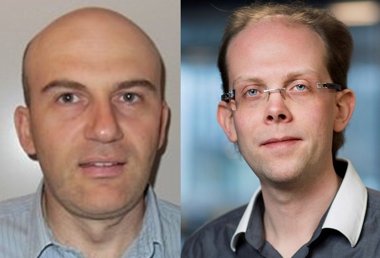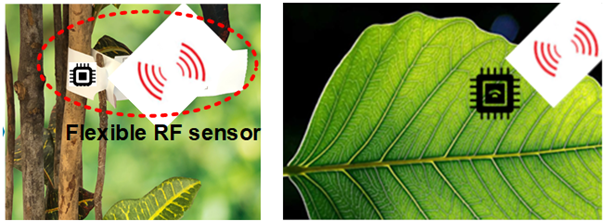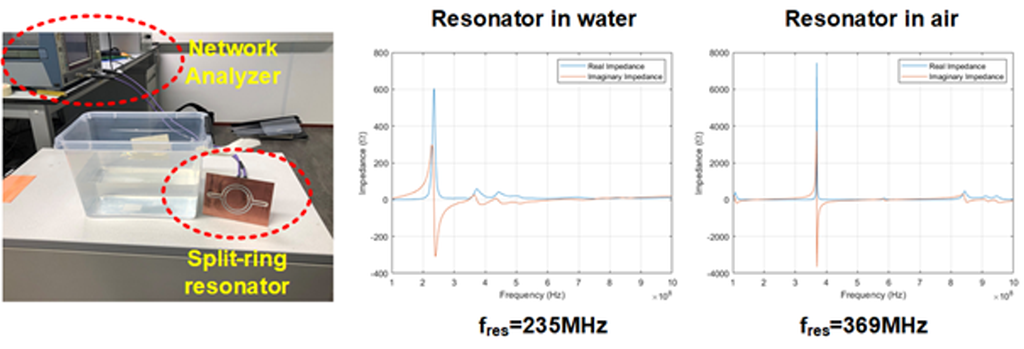In the last decade we have witnessed exponential growth in wireless communications. Number of connected devices exceed the number of people on earth and the data rates can be as high as 1GB/s. The next wave in wireless technology will be about sensing the environment.
Authors: Vojkan Vidojkovic and Sander Bronckers.
 There are many straightforward applications in the automotive industry, medical domain, material inspection and material characterization. One appealing application is sensing the health status of the plants. The information about plant health status contributes a lot to improve overall efficiency in agriculture. In this way important challenges in modern society as shortage of food and clean water as well as climate changes could be addressed.
There are many straightforward applications in the automotive industry, medical domain, material inspection and material characterization. One appealing application is sensing the health status of the plants. The information about plant health status contributes a lot to improve overall efficiency in agriculture. In this way important challenges in modern society as shortage of food and clean water as well as climate changes could be addressed.
“Our ultimate vision is to have thousands of autonomous, flexible (Radio Frequency) RF sensor attached around the stem of a plant or on a plant leaf.”
Figure 1. below shows the vision that we have at Eindhoven University of Technology (TU/e) regarding electronic systems for sensing the plant’s health status. We strongly believe in miniaturization and cost reduction as well as in massive deployment while providing sufficient performance and user friendliness. As shown in Figure 1., the existing systems, which are providing excellent performance, are bulky, relatively expensive for large-scale applications and not so convenient for massive deployment. Our ultimate vision is to have thousands of autonomous, flexible (Radio Frequency) RF sensor attached around the stem of a plant or on a plant leaf. Next to sensing functionality, they should be able to collect, store and transfer data wirelessly. The fact that we have witnessed similar process of form-factor and cost reduction in mobile phone industry, encourages us to even stronger believe in our vision.

Figure. 1. TUe vision in systems for sensing plant health status: miniaturization & cost reduction followed by massive deployment (more info on state-of-art devices for plant sensing can be found at https://www.walz.com/products/chl_p700/micro-pam/introduction.html and https://www.walz.com/products/light/ls-c/introduction.html)
Thanks to some of the great work of our master and bachelor students we have made the first steps towards proving the concept behind RF sensing.
Currently we are investigating the resonant method. The resonant method is based on the principle that the resonance frequency changes depending on the environment that surrounds the resonator. The advantage of this approach is the fact that information is retrieved from a change in frequency, and the value itself does not need to be known. So, no accurate reference is needed.
This property provides us an advantage towards miniaturization and cost-reduction. We have designed, implemented and measured a split-ring resonator (credits to our students Thom Nikkelen and Tom Bergmans). The manufactured resonator, measurement setup and measured results are shown in Figure 2. The experiment shows that based on resonance frequency shift it is possible to perform water detection, which is an indicator of a plant health status. The next steps are reducing the size of the resonator by increasing the operating frequency and investigation on the interaction with tomato plants.

Fig. 2. Detecting water using resonant method: measurement setup including split-ring resonator, real and imaginary part of resonator impedance measured in water and air
We at TU/e are very excited about the Plantenna project, sensing the plant’s health status and finally integrating electronics and plants. We very much like the interdisciplinary nature of the project and the huge potential to contribute to society. In our concept for detecting water content in plants, we focus on RF sensing and wireless communication. We also envision a combination of these two functions, targeting maximum hardware reuse, with promising first results. In the next steps we will go further with size reduction, integrating more functionality and investigating the interaction with plants. In this research we have close collaboration with Harijot Bindra from UTwente.



